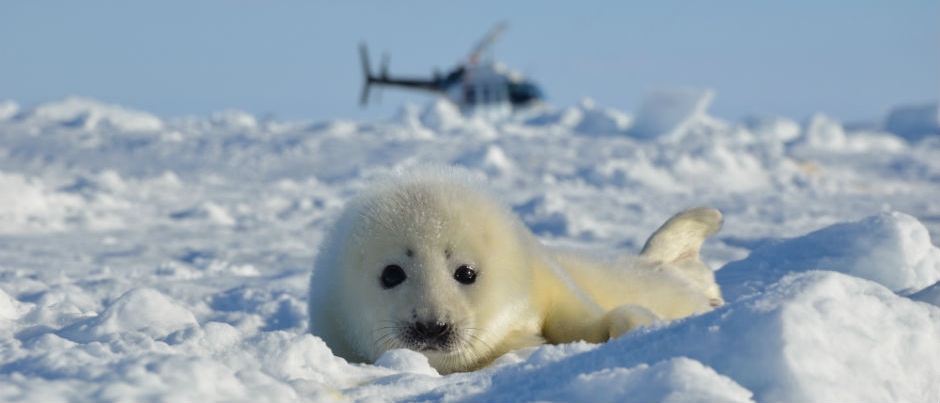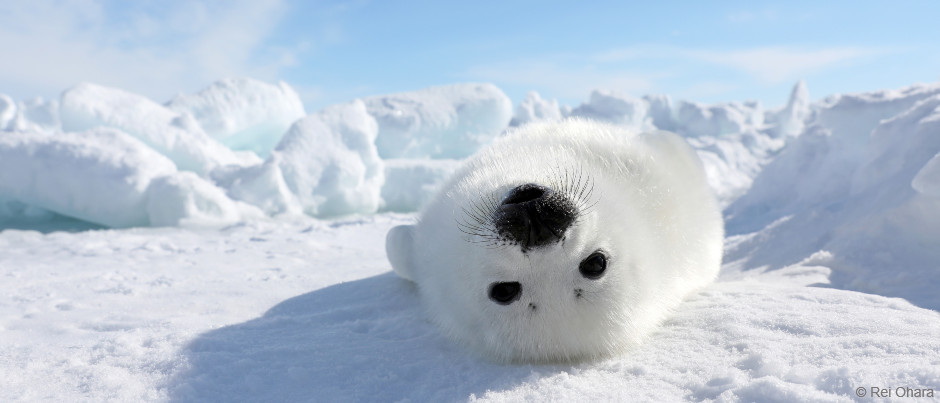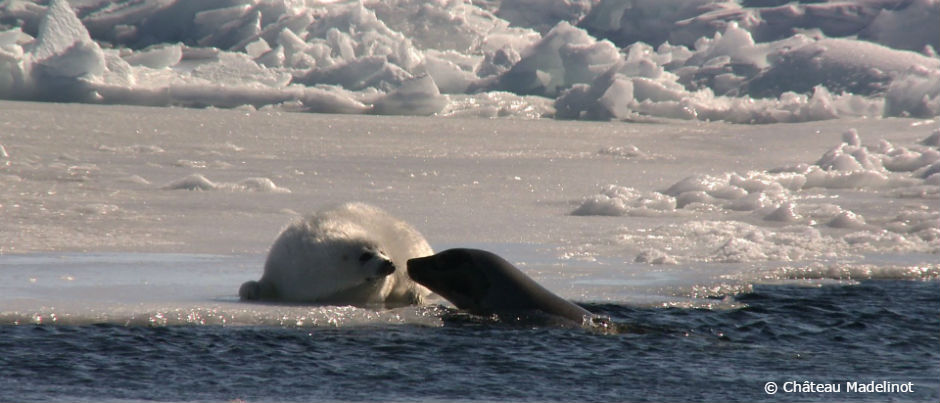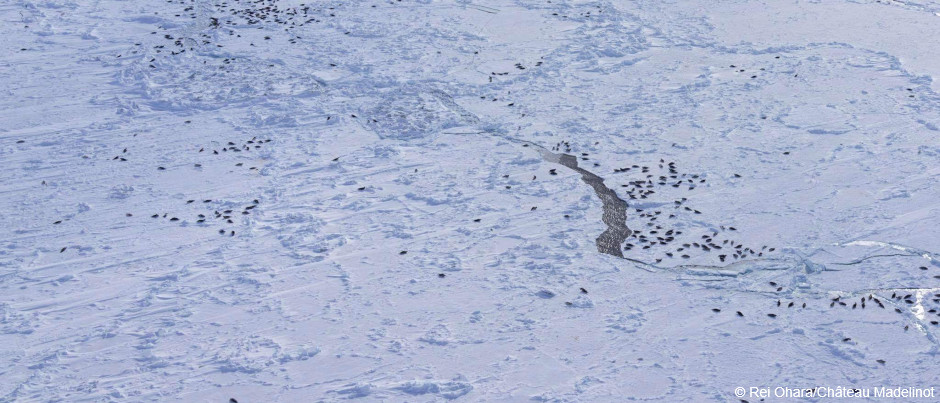The Québec maritime Blog

-
Whitecoats blend into the snow
Tourisme Îles de la Madeleine
What You Need to Know about Whitecoats (Seal Pups)
Every winter, hundreds of thousands of whitecoats are born on the sea ice found in the Gulf of St. Lawrence. But what is a whitecoat? Can these creatures be observed in the maritime regions of Québec? Keep reading for the answers to these questions and more.
What is a whitecoat?

Newborn harp seals have soft, white fur and are therefore called whitecoats. Young seals of any species are also referred to as pups.
Harp seals are pinnipeds, of which there are 33 species in the world, 18 of which belong to the Phocidae family (true seals). Four of these species, including harp seals, are found in the Gulf of St. Lawrence and thus can be observed in the maritime regions of Québec.
The life cycle of harp seal pups

Harp seals have a gestation period of about 11.5 months. After conception, delayed implantation may occur, during which the embryo may remain in the womb for three or four months before implanting in the uterus wall. This ensures that the birth of pups is synchronized at around the same period every year (when the ice is solid enough).
As pups, harp seals go through several distinct stages. At birth they weigh about 10 kg (22 lb) and are called yellowcoats because their fur is stained yellow from amniotic fluid. After a few days, the yellowish tint disappears, and their fur turns pristine white. They’re then known as thin whitecoats. As they nurse, they grow rapidly, gaining about 2.2 kg (5 lb) a day. After about five days they’re known as fat whitecoats. By the time they’ve been weaned, around day 12, most pups have more than tripled their weight to about 36 kg (80 lb). Dark grey spots then begin to appear through their fur and they’re known as greycoats. A few days later, they begin to moult in patches. At this stage, they’re known as ragged jackets. Finally, at about three weeks, they’re called beaters because of the way they beat the water as they learn to swim.
During the first three or four weeks of their lives, seal pups cannot swim because their fur is not yet waterproof. As their mothers hunt (sometimes for as long as three hours at a time), the pups are left alone on the ice and tend to stay still in an attempt to blend into their environment. However, they remain easy prey because their mothers are unlikely to come to their rescue if they’re attacked. Once the pups have weaned, they’re left to fend for themselves on a regular basis as the adult females begin to mate.
Whitecoats in the Gulf of St. Lawrence

On the ice in the Gulf of St. Lawrence, the whelping period extends from late February to early March, as the females migrate from the subarctic regions towards Greenland. Observing whitecoats in the Îles de la Madeleine is highly dependent on weather conditions since the females rely on stable ice to give birth to their pups. Because the migration route of harp seals also skirts Newfoundland and Labrador, it may be possible to observe whitecoats along the Lower North Shore.
Did you know that…?
- Although adult seals are generally unperturbed by the presence of humans, it’s recommended to stay at least 50 metres (160 feet) away from these wild animals.
- According to Fisheries and Oceans Canada’s latest statistics, the Northwest Atlantic harp seal population is abundant and consists of about 7.4 million animals.
- The hunting of whitecoats has been banned in Canada since 1987.
- The greatest threat to harp seals is global warming since they require a solid platform of ice on which to give birth and nurse their young.
- Seal milk is five times richer than cow’s milk.
(1) comment
Bill
Global Warming is their greatest threat. Good stuff. These guys will survive just fine.